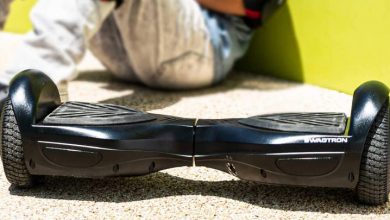
If you have an aboveground or underground pool (or are about to buy one), one of the first questions that arises is: how will I keep it clean?
In this article, we will address the cleaning of the bottom and walls, a task that should be kept separate from the cleaning and sanitation of the water, for which specific chemical products are required.
Pool Cleaning Systems
To choose the tools and the cleaning appliances for the pool, you have to take into account two factors:
- The type of pool you have.
- How much do you want to spend?
The two aspects are connected: in general to a self-supporting piscium or ” frame ” (those that belong to the cheapest and dismounted at the end of the summer), less-expensive cleaning systems are suitable in terms of money, such as cleaning kits or manual bottom cleaners, even if they are more expensive in terms of manual work and personal fatigue.
For rigid or in-ground pools, designed to remain in the garden once installed, hydraulic and electric robots, although more expensive, are preferable due to their efficiency and autonomy.
Here is a summary of the characteristics of the various pool cleaners on the market.
Manual Cleaning and Cleaning-bottom kits
The manual cleaning kits have a very low-cost and generally include the necessity to brush surfaces, eliminate impurities visible to the naked eye (debris, insects, etc.) through the mesh screen or sieve, a convenient telescopic handle. The manual bottom cleaners are similar, generally equipped with a tube and suction nozzle that can be connected to the filtering unit.
- Advantages: Very cheap
- Disadvantages: Relative accuracy
Pool Cleaning: Hydraulic Robots
The hydraulic robots perform functions similar to those of the clean-bottom robots, but work independently by moving into the pool. They draw energy by connecting to the pool filtering group and accumulating dirt in the pre-filter. More expensive than manual, but less expensive than electric robots, they may require six hours to complete the cleaning cycle; however, this does not impact the use of the pool. They need a minimum power for the filtering group, which varies depending on the model. They also clean the walls.
- Advantages: autonomous and accurate
- Disadvantages: do not work with all filter groups
Electric Robots
Electric robots are the most effective in cleaning the bottom and walls of the pool. Silent and fast, they can be controlled from the panel, integrate programming timers, and generally be built with the most advanced technologies in the sector. Equipped with lamella brushes or drive wheels, some of these robots can make the “jump” and climb along walls, depending on the model.
The Zodiac robots, for example, feature a specialized suction technology that enables the accumulation of dirt and debris without clogging the filter, thereby extending the time between spare part purchases. They work connected to power outlets and, like common household vacuum cleaners, have a filter and a bag that must be changed regularly.
- Advantages: guarantees an excellent and effortless cleaning job
- Disadvantages: more expensive



